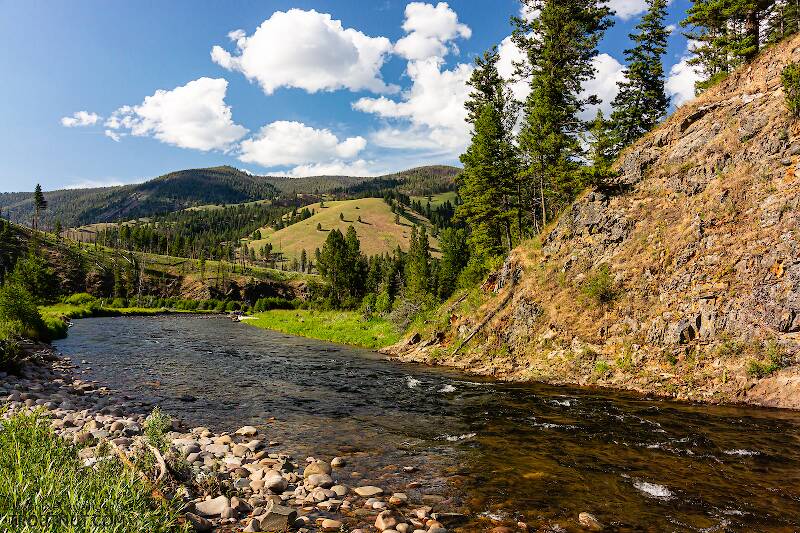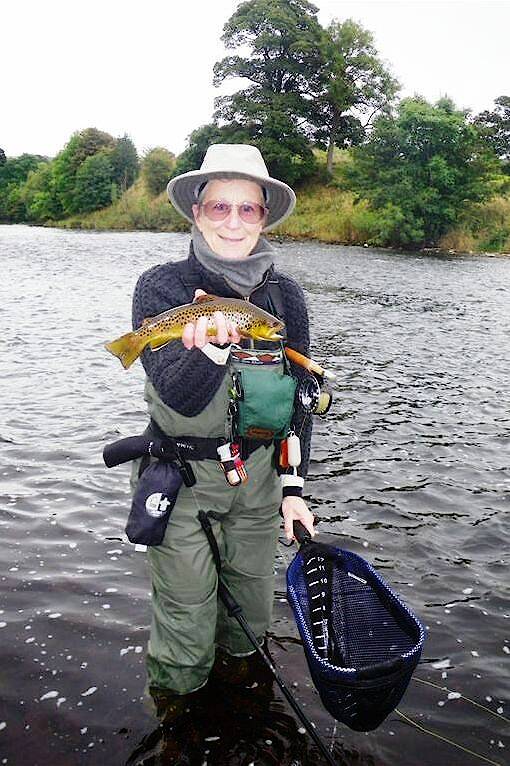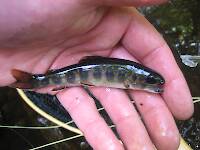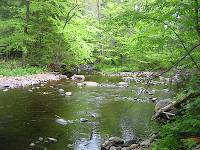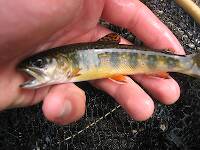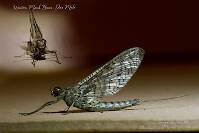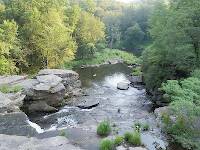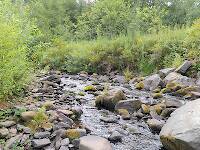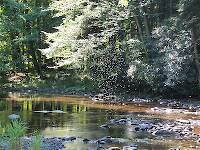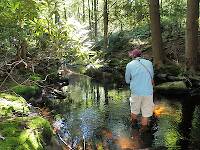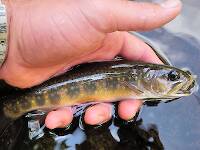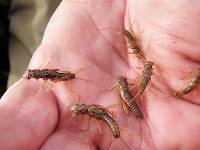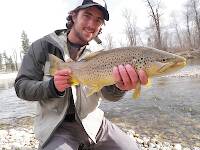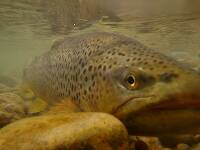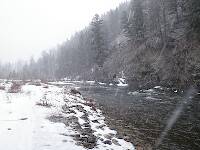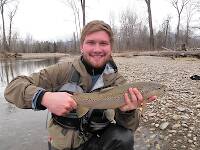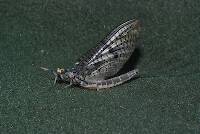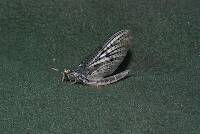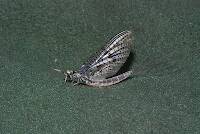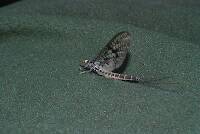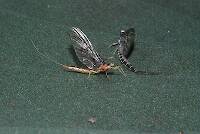
Salmonflies
Pteronarcys californica
The giant Salmonflies of the Western mountains are legendary for their proclivity to elicit consistent dry-fly action and ferocious strikes.
Featured on the forum

This one seems to tentatively key to Holocentropus, although I can't make out the anal spines in Couplet 7 of the Key to Genera of Polycentropodidae Larvae nor the dark bands in Couplet 4 of the Key to Genera of Polycentropodidae Larvae, making me wonder if I went wrong somewhere in keying it out. I don't see where that could have happened, though. It might also be that it's a very immature larva and doesn't possess all the identifying characteristics in the key yet. If Holocentropus is correct, then Holocentropus flavus and Holocentropus interruptus are the two likely possibilities based on range, but I was not able to find a description of their larvae.

Troutnut is a project started in 2003 by salmonid ecologist Jason "Troutnut" Neuswanger to help anglers and
fly tyers unabashedly embrace the entomological side of the sport. Learn more about Troutnut or
support the project for an enhanced experience here.
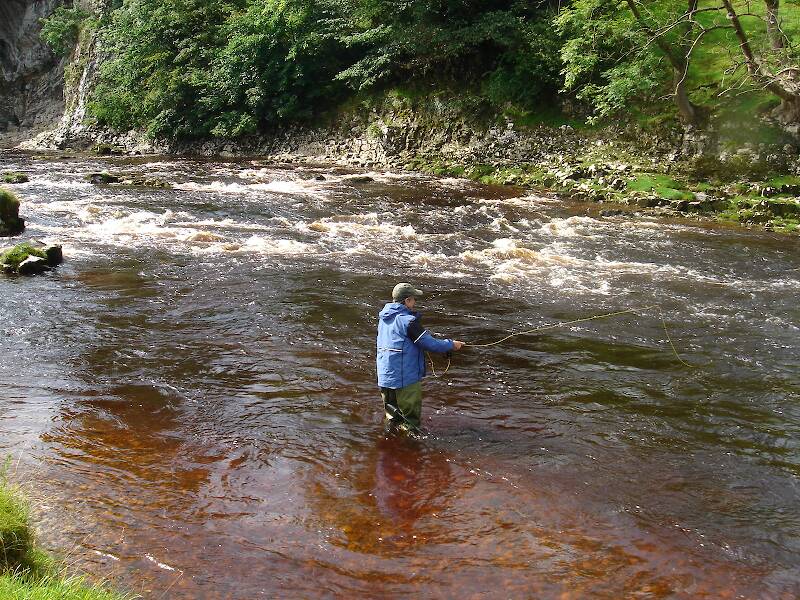
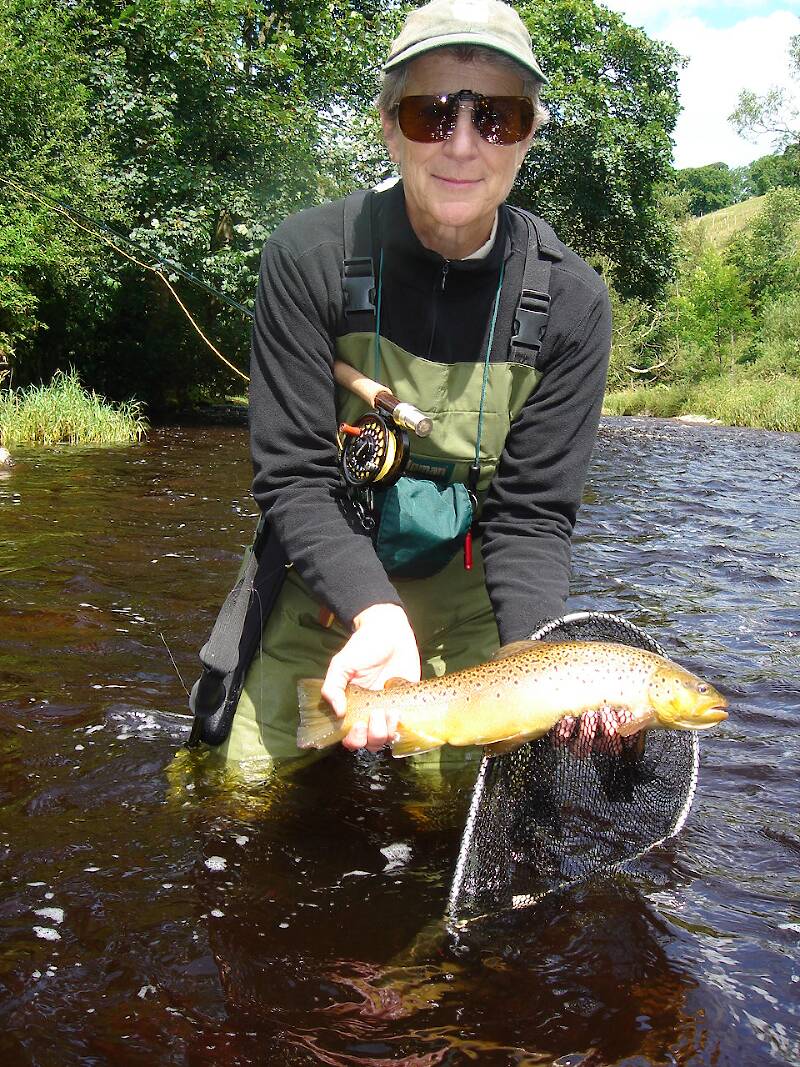
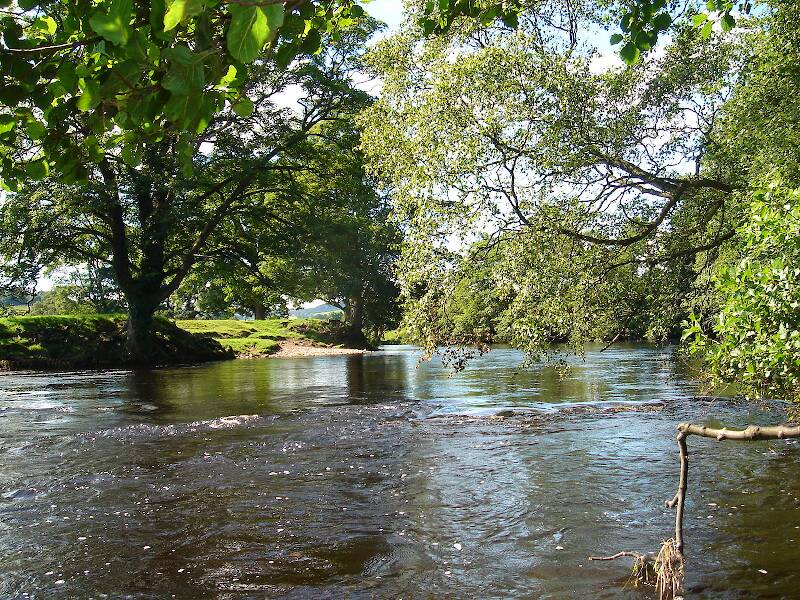
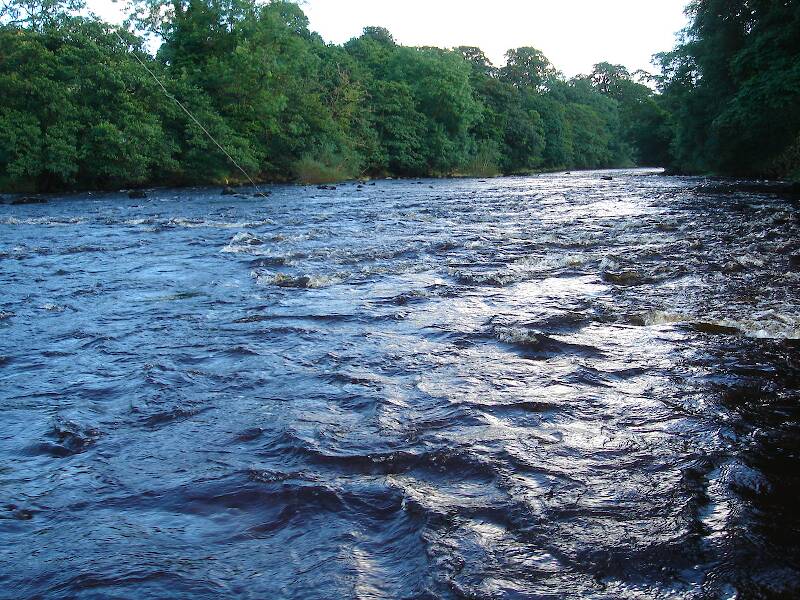
CaseyP on Jul 17, 2007July 17th, 2007, 8:33 am EDT
had a fantastic day and hope to share it with you.
"You can observe a lot by watching." Yogi Berra
Shawnny3 on Jul 17, 2007July 17th, 2007, 11:03 am EDT
Amazing fish! Congratulations.
-Shawn
-Shawn
Jewelry-Quality Artistic Salmon Flies, by Shawn Davis
www.davisflydesigns.com
www.davisflydesigns.com
Softhackle on Jul 17, 2007July 17th, 2007, 12:07 pm EDT
Yeh, Casey, What a wonderful fish. Hope you are having a great time. Keep us posted.
My best,
Mark
My best,
Mark
"I have the highest respect for the skilled wet-fly fisherman, as he has mastered an art of very great difficulty." Edward R. Hewitt
Flymphs, Soft-hackles and Spiders: http://www.troutnut.com/libstudio/FS&S/index.html
Flymphs, Soft-hackles and Spiders: http://www.troutnut.com/libstudio/FS&S/index.html
GONZO on Jul 17, 2007July 17th, 2007, 12:20 pm EDT
Way cool, Casey, way cool! You didn't say what tempted that Brit beauty. (Now's no time to start keeping secrets!)
CaseyP on Jul 17, 2007July 17th, 2007, 11:49 pm EDT
there were three heavy nymphs on the leader: one bright pink Czech, one copper, and one tungston hare's ear. all day long the fish alternated amongst the three, but the pink and the copper got the most. the other fish pictures are characterized chiefly by the escape of the subject as the shutter snapped, but all fish pictures look alike anyway!
weather's good today--looking forward to the afternoon!
weather's good today--looking forward to the afternoon!
"You can observe a lot by watching." Yogi Berra
Martinlf on Jul 18, 2007July 18th, 2007, 1:03 am EDT
Way cool, Casey. Glad you're having some luck with the fish!
"He spread them a yard and a half. 'And every one that got away is this big.'"
--Fred Chappell
--Fred Chappell
Troutnut on Jul 18, 2007July 18th, 2007, 12:46 pm EDT
Thanks for posting that Casey! "Peaty" is such a neat, British-sounding term for those tannin-stained streams. I like it.
There must be some nice satisfaction in catching browns which are both wild and native. I felt a bit of that last week catching native rainbows in Alaska.
There must be some nice satisfaction in catching browns which are both wild and native. I felt a bit of that last week catching native rainbows in Alaska.
Jason Neuswanger, Ph.D.
Troutnut and salmonid ecologist
Troutnut and salmonid ecologist
Quick Reply
Related Discussions
Topic
Replies
Last Reply
2
Apr 10, 2020
by Partsman
by Partsman

